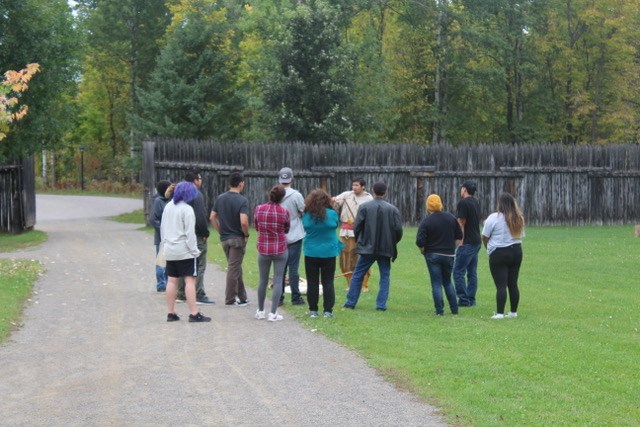Lakehead University's Indigenous Transition Year Program (ITYP), previously known as the Native Access Program, is a eight-month full-time preparatory program. Since its inception in 1990, they have been providing Indigenous students (First Nation, Inuit or Métis) the opportunity to pursue a post-secondary education in a culturally supported environment academically and socially.
When you come to a post-secondary institution, it’s expected that you’ll meet the standards of getting your credits, keeping your average up, progressing through all the years of university in a timely manner and graduation.
Jerri-Lynn Orr, the previous coordinator of the program was in this role for seven years and has transitioned into a new position while ITYP is in the midst of hiring a new coordinator. During her time with ITYP she assisted in a student’s understanding and knowledge of what success looks like and means to them. Orr believes this is what’s most important when tackling a post-secondary education.
Steps of service
Prior to entering into the program, the coordinator makes it a point to connect with students and help them find comfort.
Educational success differs for every student. ITYP makes sure this is known and understood and allows students to discover what achievement means to them.
There’s an application process and students can do a paper application which allows them to bypass an application fee. Once a student has applied, a short interview takes place that allows the coordinator and her staff to help students find comfort in the program and their own future.
When a student enters into the program, they take five general courses, including Introduction to Indigenous Learning that takes place within the general student population, giving students the opportunity to get the feel of what a first-year class is like.
Working side-by-side
Throughout the program, students gain the ability and insight into what their future holds. Whether that be staying in school or veering onto a different road.
“Success maybe is finishing one term successfully and deciding that university isn’t for them.” Orr says.
While discovering personal success and what that means, students in this program have the opportunity to embark on self-discovery with the support of these services; allowing them to ask questions and have an understanding adult to connect with when questions arise.
The program relies heavily on the support from the Indigenous Student Services Centre as a means to give students even more possibilities to decide what kind of success they want to pursue.
ITYP works under the office of Aboriginal Initiatives. This office assists the Indigenous student population at Lakehead University by providing cultural and academic support and as a whole unit, Orr says, they’re a very relational force.
Because of this, she says the students feel respected and that people understand where they’re coming from, making Lakehead feel like home.
Student Centered
This program honors and celebrates the Indigenous heritage and does this while providing culturally appropriate student services while staying alert and on top of what students need, especially in these times of change.
“[We’re] always involving the students in what’s happening and what’s important,” Orr beams. ITYP makes it a point to not only assist with a transitionary time but to allow them to decide for themselves how they’ll do so.
Going forward, the program is looking at an online version. These times have made this an unexpected reality but it’s an exciting addition. Orr says this will allow the program to reach smaller, more northern communities.
Through this time of online platforms being our means of communication and education, the Indigenous Transition Year Program has been and will continue to meet their student’s needs, even if it has to be done virtually.



